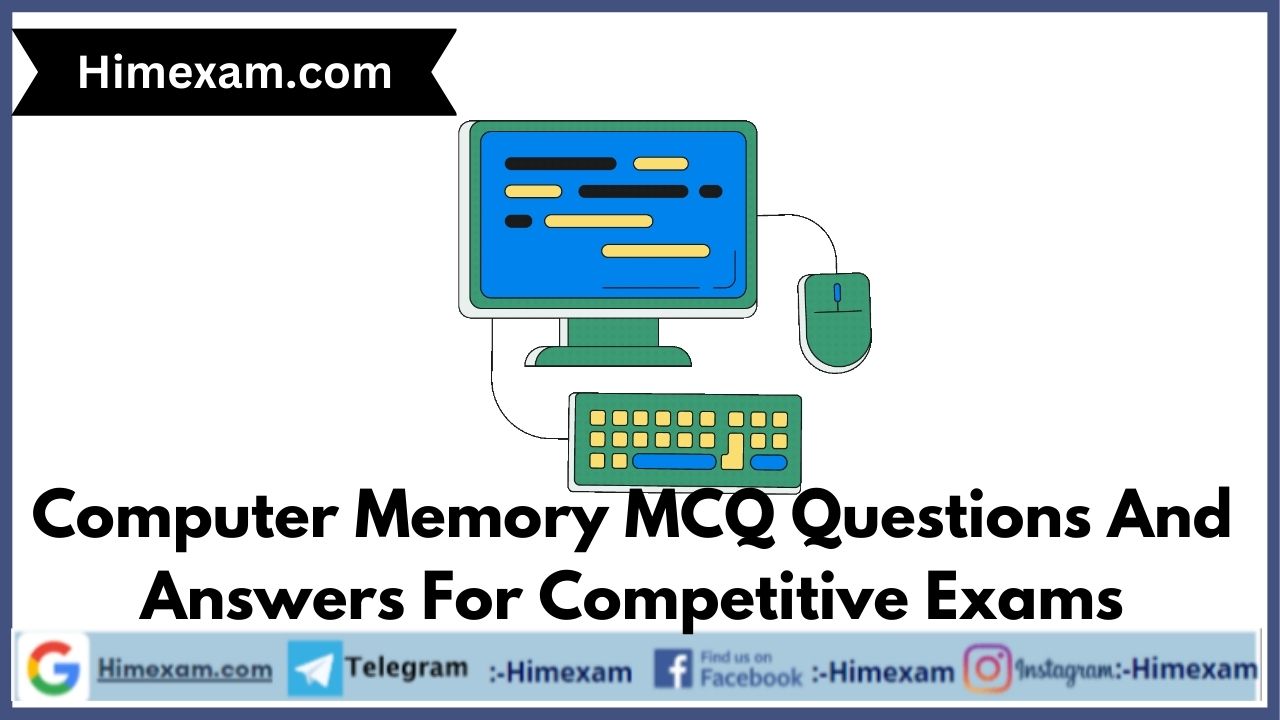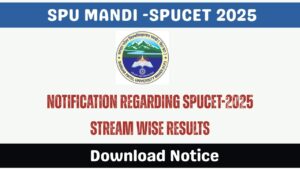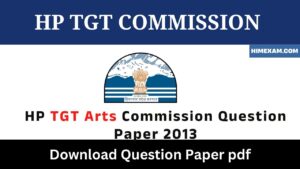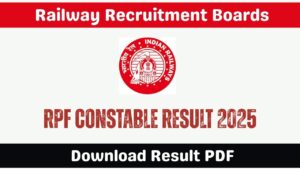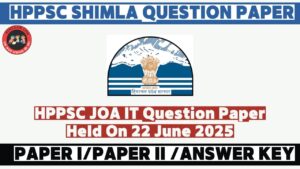Table of Contents
ToggleComputer Memory MCQ Questions And Answers For Competitive Exams
||Computer Memory MCQ Questions And Answers For Competitive Exams||Computer Memory Questions And Answers For JOA IT||
1. …… stores data and instructions required during the processing of data and output results.
(a) Memory
(b) Architecture
(c) Input
(d) Output
2. Where is data saved permanently?
(a) Memory
(b) Storage
(c) CPU
(d) Printer
3. Where are programs and data to be used by the computer available?
(a) Processing unit
(b) Output
(c) Storage
(d) Input
4. How many types of memory does a computer have?
(a) Four
(b) Eight
(c) One
(d) Two
5. Primary storage is ………. as compared to secondary storage.
(a) slow and inexpensive
(b) fast and inexpensive
(c) fast and expensive
(c) slow and expensive
6. The key feature(s) of internal memory is/are
(a) limited storage capacity
(b) temporary storage
(c) fast access and high cost
(d) All of the above
7. The two kinds of main memory are
(a) ROM and RAM
(b) primary and secondary
(c) floppy disk and hard disk
(d) direct and sequential
8. Which of the following is a correct definition of volatile memory?
(a) It does retain its contents at high temperature
(b) It is to be kept in air-tight box
(c) It loses its content on failure of power supply
(d) It does not lose its content on failure of power supply
9. Cache and main memory will not be able to hold their contents when the power is OFF. They are
(a) dynamic
b) static
(c) volatile
(d) non-volatile
10. In computer terminology, what is the full form of RAM?
(a) Random Access Memory
(b) Repeated Access Memory
(c) Rapid Access Memory
(d) Regular Access Memory
11. …… memory in a computer is where information is temporarily stored while it is being accessed or worked on by the processor.
(a) Logical
(b) Secondary
(c) ROM
(d) RAM
(e) Cache
12. Why RAM is so called?
(a) Because it is read and write memory
(b) Because it is a volatile memory
(c) Because it can be selected directly for storing and retrieving data and instructions of any location of chip
(d) Because it is a non-volatile memory
(e) None of the above
13. Which of the following is not true about RAM?
(a) RAM is the same as hard disk storage
(b) RAM is a temporary storage area
(c) RAM is volatile
(d) RAM is a primary memory
(e) Other than those given as options
14. Virtual memory allocates hard disk space to supplement the immediate, functional memory capacity of
(a) ROM
(b) EPROM
(c) the registers
(d) extended memory
(e) RAM
15. Storage that retains its data after the power is turned OFF is referred to as
(a) volatile storage
(b) non-volatile storage
(c) sequential storage
(d) direct storage
16. The advantage of DRAM is
(a) it is cheaper than SRAM
(b) it can store data more than that of SRAM
(c) it is faster than SRAM
(d) data can be erased easily from it as compared to SRAM
17. Which of the following stores data permanently in a computer?
(a) ALU
(b) Cache memory
(c) RAM
(d) ROM
18. Permanent instructions that the computer use when it is turned ON and that cannot be changed by other instructions are contained in
(a) ROM
(b) RAM
(c) ALU
(d) SRAM
19. When you first turn on a computer, the CPU is preset to execute instructions stored in the
(a) RAM
(b) flash memory
(c) ROM
(d) CD-ROM
(e) ALU
20. What is the full form of PROM?
(a) Programmable Read Only Memory
(b) Program Read Output Memory
(c) Program Read Only Memory
(d) Primary Read Only Memory
21. A disc’s content that is recorded at the time of manufacture and cannot be changed or erased by the user is
(a) memory only
(b) write only
(c) once only
(d) run only
(e) read only
22. In the field of Information and Communication Technology (ICT), what is the full form of EEPROM?
(a) Electrically Erasable Programmable Read Only Memory
(b) Electrically Efficient Portable Read Only Memory
(c) Electrically Efficient Programmable Read Only Memory
(d) Enhanced Electrical Portable Read Only Memory
23. The difference between memory and storage is that memory is …… and storage is ……… .
(a) temporary; permanent
(b) permanent; temporary
(c) slow; fast
(d) non-volatile; volatile
(e) None of the above
24. The …… acts as a buffer between the CPU and the main memory.
(a) primary memory
(b) cache memory
(c) secondary memory
(d) RAM
25. Which of the following is a very high speed semiconductor memory which can speed up the CPU?
(a) Secondary memory
(b) Main memory
(c) Primary memory
(d) Cache memory
26. What is the term used for temporarily stored data?
(a) Miscellaneous data
(b) Cache data
(c) Picked data
(d) Tempo data
27. ……… is having more memory addresses than are physically available.
(a) Virtual memory
(b) System software
(c) Application software
(d) RAM
(e) Vertical memory
28. ……… is the ability of a device to ‘jump’ directly to the requested data.
(a) Sequential access
(b) Random access
(c) Quick access
(d) All of the above
29. The ……… is the amount of data that a storage device can move from the storage to the computer per second.
(a) data migration rate
(b) data digitising rate
(c) data transfer rate
(d) data access rate
30. The main directory of a disk is called the ……… directory.
(a) network
(b) folder
(c) root
(d) other than those given as options
(e) program
31. The …… indicates how much data a particular storage medium can hold.
(a) storage
(b) access
(c) capacity
(d) memory
(e) None of these
32. The secondary storage devices can only store data but they cannot perform
(a) arithmetic operations
(b) logic operations
(c) fetch operations
(d) All of the above
33. Where do you save the data that, your data will remain intact even when the computer is turned OFF?
(a) RAM
(b) Motherboard
(c) Secondary storage device
(d) Primary storage device
34. The term ……… refers to data storage systems that make it possible for a computer or electronic device to store and retrieve data.
(a) retrieval technology
(b) input technology
(c) output technology
(d) storage technology
35. The storage device used to compensate for the difference in rates of flow of data from one device to another is termed as
(a) chip
(b) channel
(c) floppy
(d) buffer
36. Which of the following is the magnetic storage device?
(a) Hard disk
(b) Compact disc
(c) Audio tapes
(d) All of these
37. Hard disk devices are considered …… storage.
(a) flash
(b) temporary
(c) worthless
(d) non-volatile
(e) non-permanent
38. The thick, rigid metal plotters that are capable of retrieving information at a high rate of speed are known as
(a) hard disk
(b) SAN
(c) soft disk
(d) flash memory
(e) None of these
39. Hard drive is used to store
(a) volatile data
(b) non-volatile data
(c) permanent data
(d) temporary data
(e) intermediate data
40. The hard drive is normally located
(a) next to the printer
(b) plugged into the back of the computer
(c) underneath the monitor
(d) on top of the CD-ROM
(e) inside the system base unit
41. Data on a floppy disk is recorded in rings called
(a) sectors
(b) ringers
(c) rounders
(d) tracks
42. Which of the following is/are example(s) of magnetic storage media?
(a) Zip disk
(b) CD-ROM
(c) Floppy disk
(d) DVD
(e) Both (a) and (c)
43. Floppy disks are organised as
(a) files
(b) heads and folders
(c) tracks and sectors
(d) All of the above
||Computer Memory MCQ Questions And Answers For Competitive Exams||Computer Memory Questions And Answers For JOA IT||
44. The capacity of 3.5 inch floppy disk is
(a) 1.40 MB
(b) 1.44 GB
(c) 1.40 GB
(d) 1.44 MB
45. The most common storage device for the personal computer is the
(a) floppy disk
(b) USB personal computer
(c) mainframe
(d) a laptop
(e) None of these
46. Which of the following has the smallest storage capacity?
(a) Zip disk
(b) Hard disk
(c) Floppy disk
(d) Data cartridge
(e) CD
47. FDD stands for
(a) Floppy Drive Detector
(b) Floppy Drive Demodulator
(c) Floppy Disk Drive
(d) Floppy Demodulator Disc
(5e None of the above
48. ……… is the process of dividing the disc into tracks and sectors.
(a) Tracking
(b) Formatting
(c) Crashing
(d) Allotting
(e) None of these
49. Data on a floppy disk was recorded in rings called
(a) flip
(b) ringers
(c) rounders
(d) fields
(e) segments
50. Magnetic tape is not practical for applications where data must be quickly recalled because tape is
(a) a random access medium
(b) a sequential access medium
(c) a read only medium
(d) fragile and easily damaged
51. Which of the following can hold maximum data?
(a) Optical disc
(b) Floppy disk
(c) Magnetic disk
(d) Magnetic tape
52. On a CD-RW, you can
(a) read and write information
(b) only read information
(c) only write information
(d) read, write and rewrite information
53. Which of the following are advantages of CD-ROM as a storage media?
(a) CD-ROM is an inexpensive way to store large amount of data and information
(b) CD-ROM discs retrieve data and information more quickly than magnetic disks
(c) CD-ROMs make less errors than magnetic media
(d) All of the above
(e) None of the above
54. Which media has the ability to have data/information stored (written) on them by users more than once?
(a) CD-R discs
(b) CD-RW discs
(c) Zip discs
(d) Optical discs
(e) CD-RW discs and Zip discs
55. What is the difference between a CD-ROM and CD-RW?
(a) They are the same—just two different terms used by different manufactures.
(b) A CD-ROM can be written to and a CD-RW cannot.
(c) Other than those given as options
(d) A CD-ROM holds more information than a CD-RW.
(e) A CD-RW can be written to but a CD-ROM can only be read from.
56. Compact discs that can store approximately 650-800 MB of data or 74-80 min of music are
(a) zip discs
(b) CD-ROM
(c) video cards
(d) pressing machines
(e) floppy diskettes
57. A flat metallic disk that contains a large amount of permanently stored information read optically, is called a
(a) monitor
(b) ALU
(c) CD-ROM
(d) RAM 38
58. CD-ROM is an example of
(a) input device
(b) output device
(c) Both input & output devices
(d) Memory device
(e) None of the above
59. DVD refers to
(a) Digital Video Developer
(b) Digital Video Device
(c) Digital Video Disc
(d) None of the above
60. A DVD is an example of a(n)
(a) optical device
(b) output device
(c) hard disk
(d) solid state storage device
(e) None of the above
61. Which of the following discs can be read only?
(a) DVD-R
(b) DVD-ROM
(c) DVR-RW
(d) CD-R
(e) None of these
62. Which is not an external storage device?
(a) CD-ROM
(b) DVD-ROM
(c) Pen drive
(d) RAM
63. …… is the smallest unit of data in a computer.
(a) Gigabyte
(b) Bit
(c) Byte
(d) Terabyte
64. The term Bit is short for
(a) megabyte
(b) binary language
(c) binary digit
(d) binary number
(e) None of the above
65. Which among the following is another name for a group of 4 bits?
(a) Nibble
(b) Byte
(c) KiloByte
(d) MegaByte
(e) PetaByte
66. Which of the following is the smallest measure of storage?
(a) Tera byte
(b) Gigabyte
(c) Kilobyte
(d) Byte
67. ……… are used to measure both computer memory (RAM) and storage capacity of Floppy disks, CD-ROM drives and Hard drives.
(a) Bytes
(b) Bits
(c) Octal numbers
(d) Hexadecimal numbers
(e) Binary numbers
68. How many bits are equal to one byte ?
(a) 8
(b) 6
(c) 7
(d) 2
69. Instructions and memory address are represented by
(a) character code
(b) binary codes
(c) binary word
(d) parity bit
(e) None of these
70. Kilo Byte equals to how many bytes?
(a) 1000
(b) 1035
(c) 100
(d) 1008
(e) 1024
71. A …… is approximately a million bytes.
(a) giga byte
(b) kilo byte
(c) mega byte
(d) tera byte
(e) None of these
72. What does the computer abbreviation ‘MB’ used for?
(a) Megabit
(b) Millionbytes
(c) Megabytes
(d) Millionbit
(e) Microbytes
73. The amount of memory (RAM or ROM) is measured in
(a) bytes
(b) bits
(c) megabytes
(d) megabits
(e) hertz
74. How many kilobytes make a megabyte?
(a) 128
(b) 1024
(c) 256
(d) 512
(e) 64
75. A … is approximately one billion bytes.
(a) kilobyte
(b) bit
(c) gigabyte
(d) megabyte
(e) None of these
76. The term ‘gigabyte’ refers to
(a) 1024 byte
(b) 1024 kilobyte
(c) 1024 megabyte
(d) 1024 gigabyte
(e) None of the above
77. Which of the following is the largest unit of storage?
(a) GB
(b) KB
(c) MB
(d) TB
(e) None of these
78. Which of the following is correct sequence of smallest to largest units of storage size?
(a) Petabyte, Kilobyte, Megabyte, Gigabyte, Terabyte
(b) Kilobyte, Megabyte, Terabyte, Petabyte, Gigabyte
(c) Megabyte, Terabyte, Gigabyte, Kilobyte, Petabyte
(d) Kilobyte, Megabyte, Petabyte, Terabyte, Gigabyte
(e) Kilobyte, Megabyte, Gigabyte, Terabyte, Petabyte
79. How many gigabytes is equal to 1 petabyte?
(a) 256
(b) 512
(c) 1024
(d)1024 × 1024
80. …… (HHDD) is a technology where the conventional disk drive is combined with non-volatile flash memory, of typically 128 MB or more to cache data during normal use.
(a) Hyper Hard Disk Drive
(b) Hybrid Hard Disk Drive
(c) Hybrid Helium Disk Drive
(d) Hyper Helium Disk Drive
81. Which of the following provides computing and storage capacity services to heterogeneous community of end recipients?
(a) Cloud computing
(b) Big data
(c) FutureSkills
(d) Robotics
82. What is/are characteristics of cloud computing?
(a) On demand self services
(b) Broad network access
(c) Resource pooling
(d) All of the above
83. Which type of cloud deployments is used to serve multiple users, not a single customer?
(a) Private cloud
(b) Public cloud
(c) Hybrid cloud
(d) None of these
84. Which cloud computing services refers to supply on demand environment for developing software applications?
(a) SaaS
(b) AaaS
(c) PaaS
(d) IaaS
||Computer Memory MCQ Questions And Answers For Competitive Exams||Computer Memory Questions And Answers For JOA IT||
ANSWERS1. (a) 2. (b) 3. (c) 4. (d) 5. (e) 6. (d) 7. (a) 8. (c) 9. (c) 10. (a) 11. (d) 12. (c) 13. (a) 14. (e) 15. (b) 16. (a) 17. (d) 18. (a) 19. (c) 20. (a) 21. (e) 22. (a) 23. (a) 24. (b) 25. (d) 26. (b) 27. (a) 28. (b) 29. (b) 30. (c) 31. (c) 32. (d) 33. (c) 34. (d) 35. (d) 36. (a) 37. (d) 38. (a) 39. (c) 40. (e) 41. (d) 42. (e) 43. (c) 44. (d) 45. (a) 46. (c) 47. (c) 48. (b) 49. (e) 50. (b) 51. (d) 52. (d) 53. (a) 54. (b) 55. (a) 56. (b) 57. (c) 58. (d) 59. (c) 60. (a) 61. (b) 62. (d) 63. (b) 64. (c) 65. (a) 66. (d) 67. (a) 68. (a) 69. (b) 70. (e) 71. (c) 72. (c) 73. (c) 74. (b) 75. (c) 76. (c) 77. (d) 78. (e) 79. (d) 80. (b) 81. (a) 82. (d) 83. (b) 84. (c)
Join Our Telegram Group :- Himexam

